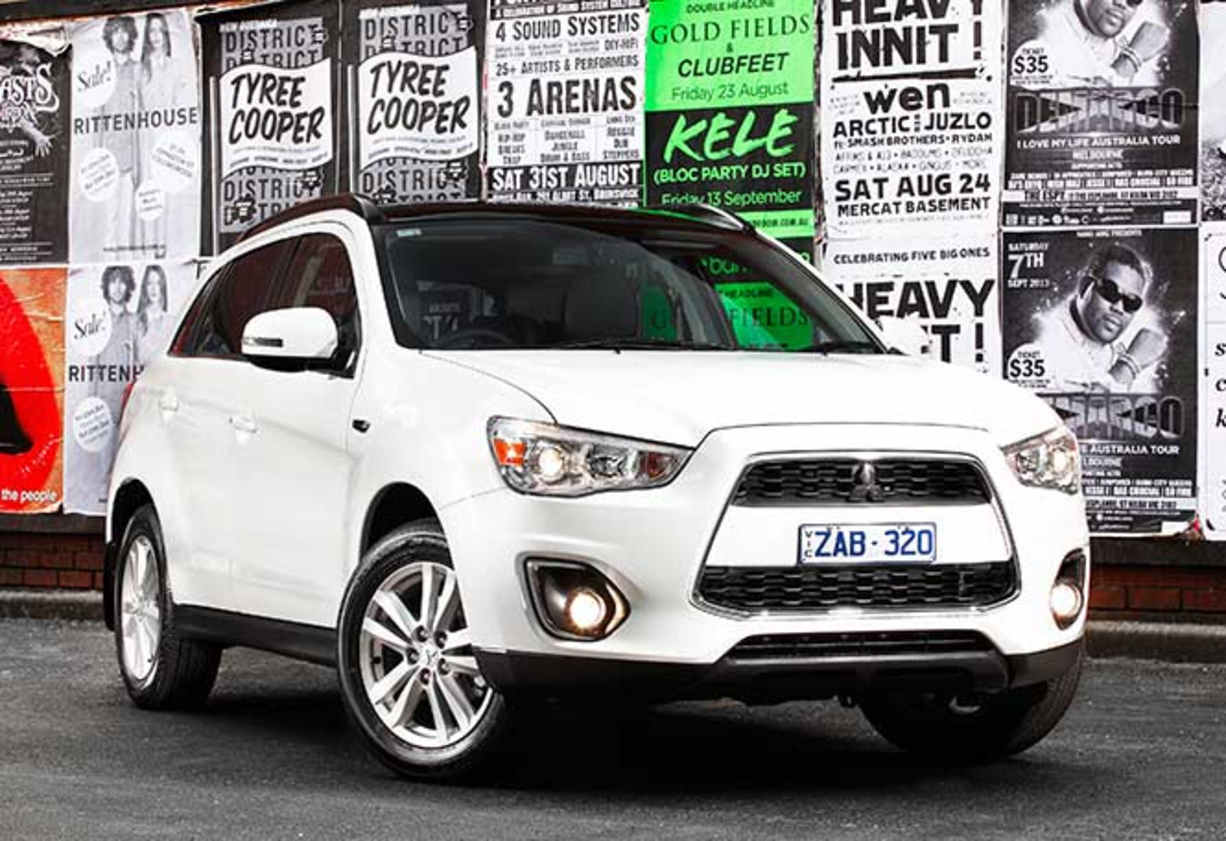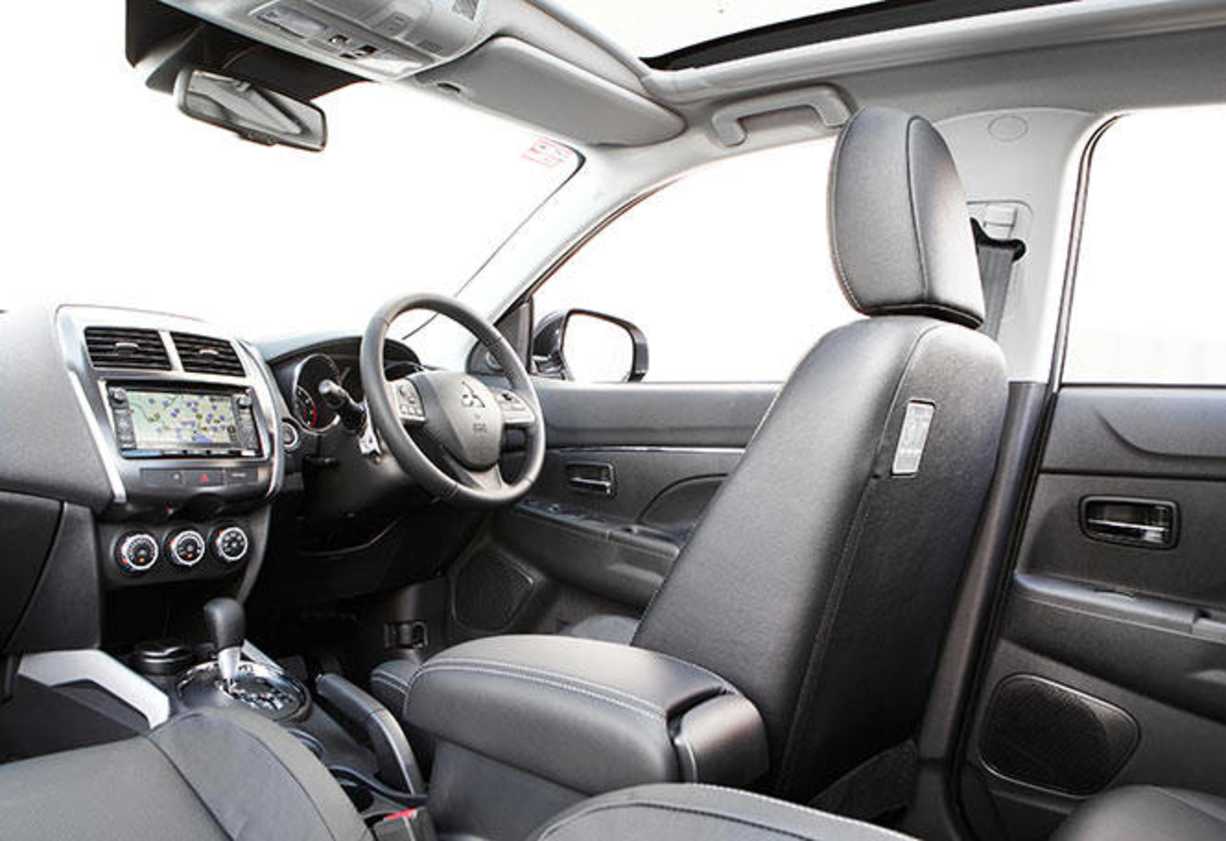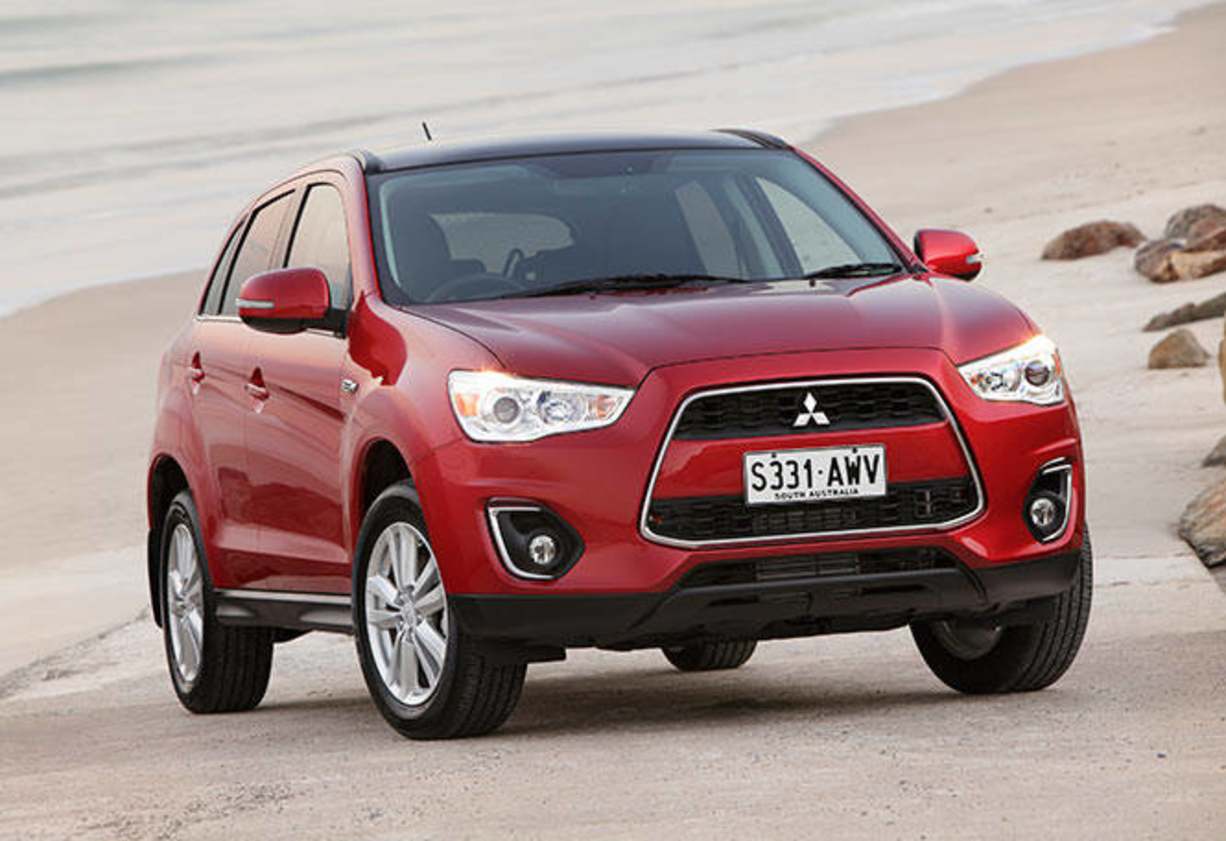The United Nations line-up that is the Australian compact SUV segment is in for a shake-up. A shift in the balance of power towards Japan is imminent, with the arrival of Mitsubishi's ASX in turbodiesel auto guise. To the end of May this year, the ASX was running behind the Hyundai's ix35, Nissan's Dualis, Subaru's XV (which doesn't have a diesel model) and the VW Tiguan - but that order is likely to change.
Expect the ASX to get a sales kick on the diesel side of the equation with the arrival of the auto - conservative estimates from within suggest retaining its current 600 a month, with 150 of those diesel, but it would be no surprise here to see it surpass that.
Mitsubishi Australia CEO Mutsuhiro Oshikiri says the addition of a 4WD diesel auto reflected the company's global direction. "The ASX is a popular vehicle in the Australian market and we are confident the addition of this economical diesel automatic model will appeal to customers who want a versatile and stylish compact SUV that sports all the features and is value for money," he says.
Value
The turbodiesel-automatic drivetrain is on offer in an entry-level model for $31,990 (slotting in between the pair of 2WD petrol models) and a premium Aspire variant, which at $36,490 is $1500 above the existing petrol-CVT and 1.8-litre turbodiesel manual Aspire models.
The standard fare includes 16-inch alloy wheels, climate control (with rear vents), cruise control, remote central locking and entry, power windows, power-adjustable exterior mirrors, a leather-wrapped steering wheel with audio controls, leather bound gearshift and 60/40-split fold and reclining rear seat.
Upping the order to the Aspire adds 17 inch alloys, front fog lights, "privacy" tinted rear windows, leather seat trim, keyless entry and start, auto wipers and headlights, power-adjustable driver's seat, front seat heaters and a panoramic fixed glass roof with LED ambient lighting strip.
The infotainment is taken care of via touchscreen - there's Bluetooth phone and audio link as well as USB input, with the Aspire gaining satnav and SD card input controlled via a larger touchscreen. Sadly, the nine-speaker Rockford-Fosgate sound system upgrade is on the way out, for those who like to shake their own mirrors.
Technology
The ASX diesel pinches its 2.2-litre turbodiesel - although it is 2268cc so technically it's a 2.3 - from the larger (but platform-sharing) Outlander, which has an extra 85kg of paunch to propel over the 1525kg ASX.
Peak power is 110kW at 3500rpm, with 360Nm of torque on offer between 1500 and 2750rpm. Finally teamed with a six-speed automatic transmission, the price paid for the extra torque and no need for a clutch pedal is small - 0.1 of a litre every 100km.
Combined fuel consumption is a claimed 5.8 litres per 100km, with 153g/km of CO2 emissions - it rises to 7.1 during the city cycle and drops slightly to 5.1 on the open road, numbers that are not beyond the realms given previous experience in this vehicle.
The little Mitsi boasts a claimed (and unchanged over the 1.8 turbodiesel) 1400kg braked towing capacity, which is 400kg more than a revised diesel Toyota RAV4. The ASX also has a locking centre diff function within the on-demand AWD setup to give it an extra yard further off the blacktop.
Design
Not much has changed since the ASX had a makeover late last year, when it scored a reshaped front end, including a redesigned grille, and an updated rear bumper. A compact design, it sits 180mm off the deck, on the same 2670mm wheelbase as the Outlander but is 360mm shorter in length, 65mm lower in overall height and 30mm narrower.
Shorter front and rear overhangs are obvious, but the result is good interior space. Seats are on the flat side but are not uncomfortable, leg and headroom front and rear are above average and only cabin width (and the awkward centre seatbelt path) would make three little 'uns (or comfortable accommodation for two adults) the limit for the rear bench.
Cargo space remains good too - Mitsubishi says its 416 litres (13 litres more than the popular Mazda CX-5), rising to 1158 litres when riding two-up in the base model, or 1109 litres in the Aspire.
Safety
The compact SUV range wears five ANCAP stars thanks to seven airbags including front, front-side, full-length curtain and driver's knee bags, stability and traction control, anti-lock brakes, ISOFIX child restraint anchor points, front seatbelt pretentioners with force limiters and lap-sash seatbelts for five.
There's also the reassurance of the switchable (but now on-demand) AWD system, including the ability to lock the centre diff, as well as Mitsubishi's Reinforced Impact Safety Evolution (RISE) body system that claims the strength of "an integrated chassis" within the one-piece bodyshell.
The entry-level 4WD diesel auto also gets a reversing camera and the Aspire adds a set of rear sensors to its safety features list.
Driving
Immediately the additional 60Nm of torque is noticeable from the thrummy four-cylinder turbodiesel, as it only has to haul an extra 10kg over the manual 1.8 turbodiesel version. It's got the standard clatter when cold and but it improves once warm and while underway.
The engine doesn't mind a rev either, although with that amount of urge on offer from 1500rpm, trips to the red-line are not required. What might be worth revisiting for Mitsubishi is the transmission calibration - it's a long-overdue auto that is smooth and swift, if not DSG quick, when swapping ratios, but its too keen to slot into a higher gear in suburban running.
The optimistic transmission makes the paddle shifters - mounted on the column, not the wheel, so you don't have to chase them - more useful than normal, as there's no sports mode for the automatic mode. Ride quality for the littlest SUV in the Mitsubishi range is firm but good enough to live with on the school run, which can be completed with an easy demeanour.
Slipperier surfaces are dealt with well by the AWD system, which reapportions drive accordingly before it feels the need to awaken the electronic safety nursemaids. Steering-wise it's not as sharp through the bends as a CX-5, but it feels more capable and likely to get its wheels dirty and not stuck. The infotainment and satnav system can be a little convoluted to use, but there's USB and Bluetooth connectivity and a decent sound quality.
Mitsubishi ASX 2013: (4Wd)
| Engine Type | Diesel Turbo 4, 2.3L |
|---|---|
| Fuel Type | Diesel |
| Fuel Efficiency | 5.9L/100km (combined) |
| Seating | 5 |
| Price From | $9,680 - $13,200 |
| Safety Rating |
|
Verdict
The little wagon is quietly confident and capable, roomier and sportier than first impressions tend to suggest. Now that the features list has the automatic for which so many lazy Australian drivers yearn, the ASX will find considerably more homes and fit neatly into the all-rounder niche.
Pricing Guides


































.jpg)









.png)














